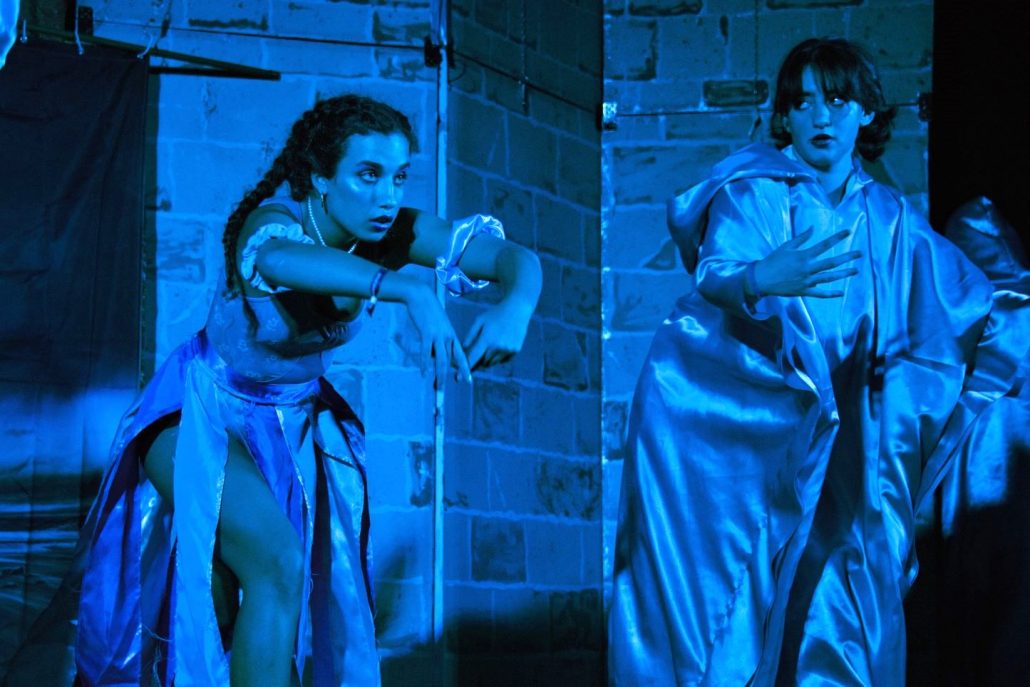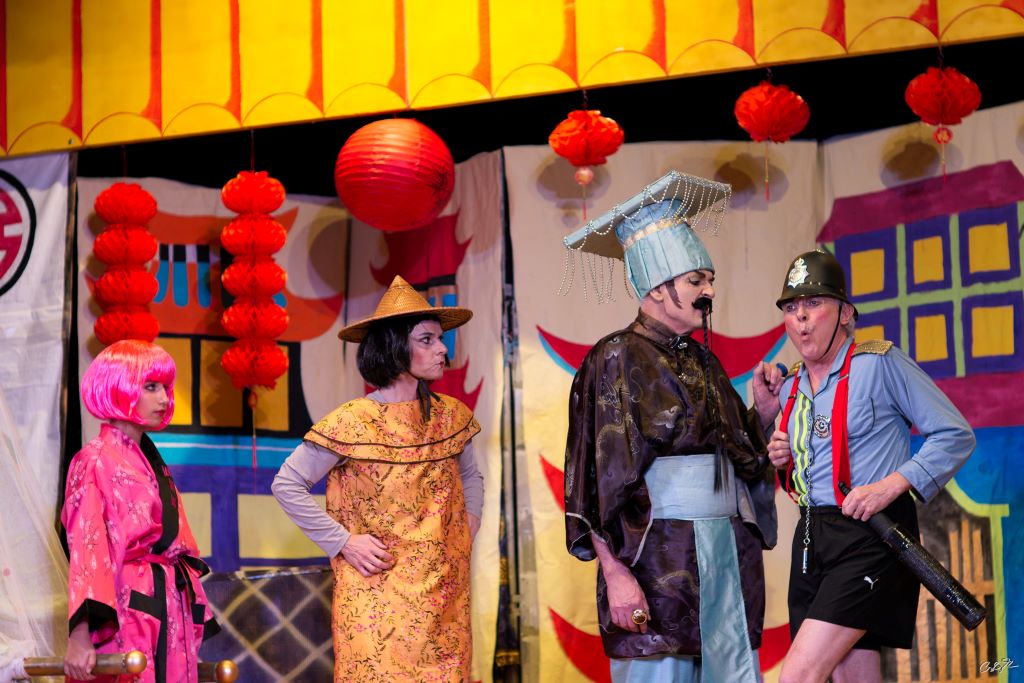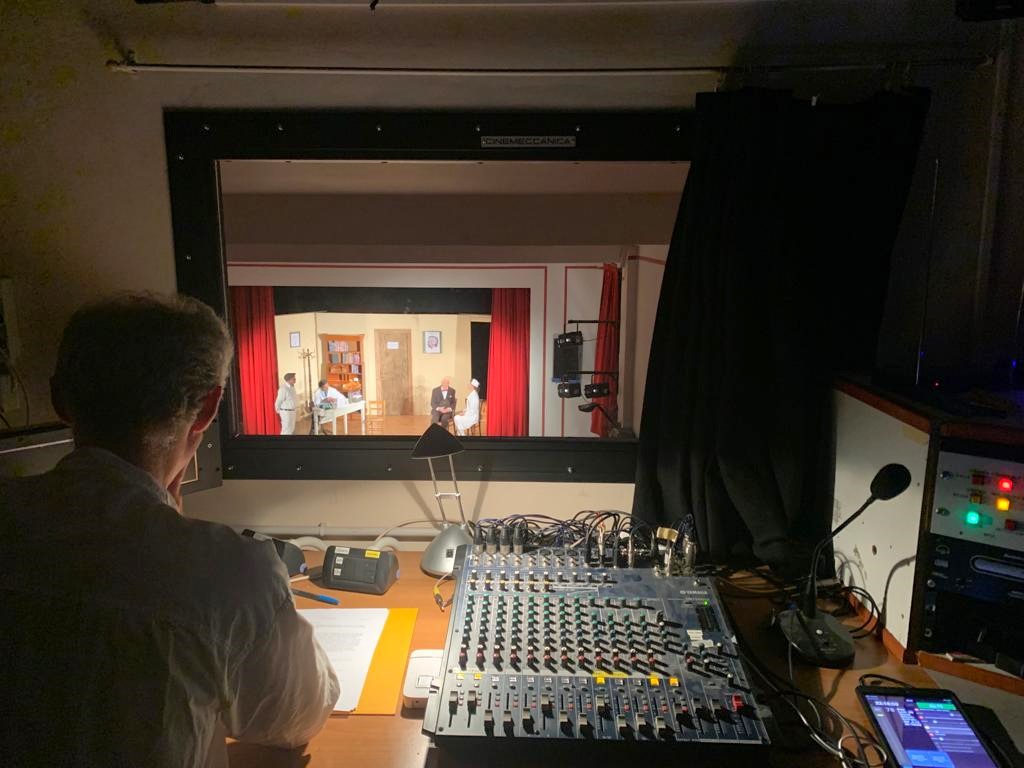LIGHTING
Stage lighting including special effects is, of course, the most important part of a theatre show; without it you do not see anything.
But more seriously, it does not only illuminate the stage, actors, set and props, but creates an atmosphere. Pub, sunrise, moonlight, ship in a storm, toxic dances. Front, back, up or down. Plus the famous follow spot, which highlights and of course follows an important character.


Theatres usually have their own, oldish but still nice and functional lighting equipment. Some are used less often, so it may happen that the bulbs explode just 15 minutes before the beginning. Or the same may happen the next day as well. These nice classical fixtures also consume quite some electricity; having all lights on may easily mean 8-10 kW which, apart from roasting the actors (and some of them do need roasting), is quite something in case of a full day rehearsal and the current electricity prices.
Luckily we also have a sizable stock of our own equipment: two follow spots, many LED panels and bars, UV lights, strobes, smoke and fog machines. You also need to power and control them. We therefore have kilometres of power and DMX cables, and a good set of wireless DMX (so that you can reach the light from the command without having to wire everything). Relays, control boards, and even a Chamsys mini wing for fancy and comfortable stuff (once you manage to get through the logic of their magic Q software…).

The actual work starts when the script is finalised and we go to the theatre for the first time. This is when most of the lighting design needs to be agreed with the Director (who is under the naive impression that his/her word is final!), designed and implemented. And then redesigned during the next rehearsal, of course.
But when you are sitting in the mystical tech booth in the back or above everyone, the real thrill starts. Are your notes and settings right? Will you make the right transitions? Will some of the stubborn LEDs start to blink in random colours? Do you get the stage information correctly that the set change is done and you can turn up the lights after a blackout? What to do when actors miss giving you a cue? There in the booth you see everything and have to see ahead, feel and also control the rhythm of the performance. You become one with the show, for two or three consecutive nights. And all this without a stage fright, that is quite a deal!
